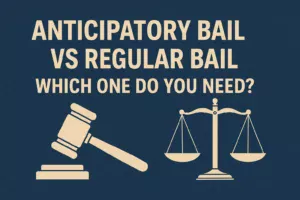In this article we will discuss about Legal Frameworks And Initiatives To Combat Female Infanticide And Feticide
Introduction to the Issue
Female infanticide and feticide are grave issues that plague societies around the world, particularly in India. These practices stem from deep-rooted gender biases and socio-economic factors. Recognizing the severity of these issues, India has taken significant strides in developing legal frameworks and initiatives aimed at eradicating female infanticide and feticide. This article explores the measures implemented by the Indian government to combat these practices, emphasizing the importance of legal intervention and societal change.
Understanding Female Infanticide and Feticide
The Problem at Hand
Female infanticide refers to the deliberate killing of newborn female children, while feticide involves the termination of a pregnancy based upon the gender of the fetus. These actions are often driven by cultural preferences for male offspring, who are seen as heirs and caretakers for their parents in old age. Such practices not only reflect gender discrimination but also contribute to a skewed sex ratio, leading to long-term societal imbalances.
The Root Causes
Several factors contribute to the persistence of female infanticide and feticide in India, including dowry systems, economic burdens associated with raising girls, and the undervaluing of women’s roles in society. Addressing these root causes is crucial for any legal and social initiatives to be effective.
Legal Frameworks And Initiatives To Combat Female Infanticide And Feticide In India
Legal Frameworks in India
The Pre-Conception and Pre-Natal Diagnostic Techniques (Prohibition of Sex Selection) Act, 1994 (PCPNDT)
The PCPNDT Act was enacted to prevent sex selection before or after conception and misuse of prenatal diagnostic techniques for sex-selective abortions. It prohibits the advertisement of any technique for sex selection as well as the sale of ultrasound machines to unauthorized entities. Regular monitoring and crackdowns on illegal clinics have been a significant part of this act’s implementation.
The Protection of Women from Domestic Violence Act, 2005
While this act does not directly address female infanticide or feticide, it provides a broader legal framework to protect women’s rights and addresses issues of violence that can be linked to the devaluation of female life.
Penal Code Amendments
The Indian Penal Code (IPC) has provisions under which acts of female infanticide and feticide are punishable offenses. These include sections on murder, homicide for dowry, and the Dowry Prohibition Act, reinforcing the illegality of gender-based violence.
Initiatives and Measures
National and State-Level Campaigns
Several campaigns and programs have been launched to raise awareness and educate the public about the value of girl children. The ‘Beti Bachao, Beti Padhao’ (Save the Daughter, Educate the Daughter) campaign is one such initiative that aims to improve the efficiency of welfare services intended for girls in India.
Role of NGOs and Civil Society
Non-Governmental Organizations (NGOs) and civil society groups play a pivotal role in complementing government efforts. They work towards raising awareness, providing counseling, and even rescue and rehabilitation of victims.
Importance of Education and Economic Empowerment
Educating the masses and empowering women economically are seen as long-term strategies to combat female infanticide and feticide. Education leads to better awareness, while economic empowerment provides women with independence, making them less vulnerable to discriminatory practices.
Conclusion: A Call for Collective Action
The fight against female infanticide and feticide in India requires a multifaceted approach involving legal measures, societal change, and empowerment. While the legal frameworks set the foundation for penalizing and preventing such practices, real change also depends on shifting societal attitudes and providing women with equal opportunities. Collective action from the government, civil society, and the public at large is crucial for making India a country where girls are welcomed and valued equally.
Final Thoughts
The legal initiatives and frameworks in India represent a robust approach to combating female infanticide and feticide. However, their success ultimately hinges on the implementation and the willingness of society to challenge and change age-old norms. It’s a long road ahead, but with persistent efforts and collective will, it’s possible to envision a future free of gender-based discrimination.
FAQs on Legal Frameworks and Initiatives to Combat Female Infanticide and Feticide in India
1. What is female infanticide?
Answer: Female infanticide is the deliberate killing of newborn female children due to a preference for male offspring.
2. How is female feticide different from infanticide?
Answer: Female feticide involves terminating a pregnancy based on the gender of the fetus, usually favoring males over females.
3. Why do female infanticide and feticide occur in India?
Answer: These practices stem from deep-rooted gender biases, socio-economic factors like dowry systems, and a preference for male heirs.
4. What law prohibits sex selection in India?
Answer: The Pre-Conception and Pre-Natal Diagnostic Techniques (Prohibition of Sex Selection) Act, 1994 (PCPNDT Act) prohibits sex selection in India.
5. Can doctors legally reveal the gender of a fetus in India?
Answer: No, it is illegal for doctors or any medical professionals to reveal the gender of a fetus under the PCPNDT Act.
6. What are the penalties for violating the PCPNDT Act?
Answer: Penalties include imprisonment, fines, or both, and can extend to the cancellation of the medical practitioner’s license.
7. Is female infanticide considered a crime under Indian law?
Answer: Yes, female infanticide is treated as murder under the Indian Penal Code and is a punishable offense.
8. What is the ‘Beti Bachao, Beti Padhao’ campaign?
Answer: It is a government campaign aimed at saving girl children and educating them, to improve their welfare and status in society.
9. How effective are these laws and initiatives in combating female feticide and infanticide?
Answer: While these laws and initiatives have made progress in raising awareness and curbing these practices, challenges remain in implementation and changing societal attitudes.
10. Can individuals report suspected violations of the PCPNDT Act?
Answer: Yes, individuals can report suspected violations to the appropriate authorities, including local health departments or the police.
11. Are there any support systems for women pressured into sex-selective practices?
Answer: Yes, there are various NGOs and helplines that offer support and counseling to women facing pressure for sex-selective abortions.
12. How does the government monitor illegal sex selection activities?
Answer: The government conducts regular inspections and monitoring of medical facilities to ensure compliance with the PCPNDT Act.
13. What role do NGOs play in this issue?
Answer: NGOs play a crucial role in raising awareness, advocacy, providing support to affected women, and working towards societal change.
14. Can technology help in monitoring and preventing female feticide?
Answer: Yes, technology, including data analytics and monitoring software, can help track illegal activities and enforce laws more effectively.
15. What is the significance of education in combating female feticide and infanticide?
Answer: Education promotes gender equality, helps in changing societal attitudes, and empowers women, reducing the incidence of these practices.
16. How does economic empowerment of women help?
Answer: Economic empowerment gives women independence and a voice in family and societal decisions, reducing their vulnerability to discriminatory practices.
17. Are there any specific states in India where these practices are more prevalent?
Answer: Yes, certain states with skewed sex ratios, like Haryana, Punjab, and Rajasthan, have been identified as more affected by these practices.
18. What steps can the general public take to help combat these issues?
Answer: The public can help by raising awareness, reporting illegal activities, and supporting gender equality initiatives.
19. Is female feticide a global issue?
Answer: Yes, while more prevalent in some countries, female feticide is a global issue affecting various cultures and societies.
20. Has there been any improvement in sex ratios in India due to these initiatives?
Answer: Some regions have reported improvements in sex ratios, though nationwide progress varies and requires continued efforts.
21. What happens to medical professionals found guilty of violating the PCPNDT Act?
Answer: They face legal penalties, including imprisonment and fines, and may have their licenses revoked or suspended.
22. How can one report illegal prenatal sex determination tests?
Answer: Reports can be made to local health authorities, the Women and Child Development Department, or the police.
23. Are there any campaigns aimed specifically at men to combat these issues?
Answer: Yes, some campaigns target men to educate them about gender equality and the importance of valuing female life.
24. Can international organizations play a role in addressing female feticide and infanticide in India?
Answer: International organizations can offer support through funding, expertise, and global awareness campaigns.
25. What is the role of education in changing societal attitudes towards girls?
Answer: Education fosters critical thinking, challenges stereotypes, and promotes values of equality and respect for all genders.
26. Are there any legal protections for whistleblowers reporting sex-selective practices?
Answer: Yes, whistleblowers are protected under various laws, ensuring their safety and confidentiality when reporting illegal activities.
27. How do cultural beliefs contribute to female feticide and infanticide?
Answer: Cultural beliefs and traditions that favor males over females contribute significantly to the continuation of these practices.
28. What measures are taken to protect the identity of those reporting illegal activities?
Answer: Authorities ensure confidentiality and protection of identities to encourage reporting without fear of retaliation.
29. How can social media be used to combat female feticide and infanticide?
Answer: Social media can spread awareness, share information on legal rights and support services, and mobilize public opinion against these practices.
30. What is the long-term vision of India’s efforts to combat female feticide and infanticide?
Answer: The long-term vision is to achieve gender equality, where girls are valued equally, leading to balanced sex ratios and a healthier society.













